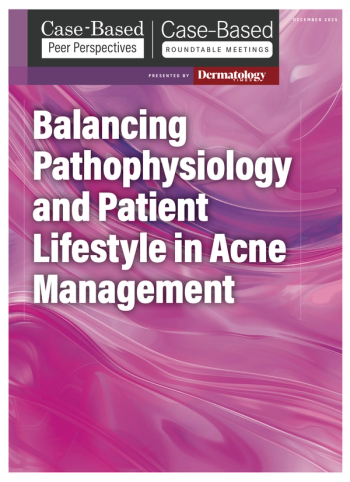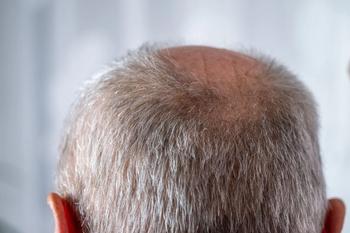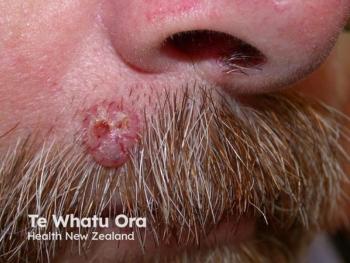
The Impact of Alcohol-Based Hand Sanitizers on Skin Barrier Function
Key Takeaways
- Alcohol-based virucidal hand sanitizers caused significant skin irritation, dehydration, and erythema, with ABVHR-D showing the most severe effects.
- All tested formulations were less irritating than pure ethanol and isopropanol, suggesting a better skin irritation profile.
Four variations of virucidal sanitizers were evaluated for their effect on skin irritation, erythema, transepidermal water loss, and more.
A new study has assessed how alcohol-based virucidal hand sanitizers can affect the function of the skin barrier.1 Four variations of virucidal sanitizers were tested and compared to controls for 3 days.
The randomized, experimental trial involved 48 healthy adult participants. All were Caucasian and had no history of skin conditions or systemic diseases. The mean age of the cohort was 37.4 years and 32% were female. Each patient halted the use of detergents, emollients, and moisturizers before beginning the study.
The investigators tested 4 types of commercially available, alcohol-based hand rubs with virucidal properties (ABVHRs). ABVHR-A and ABVHR-B had higher concentrations of ethanol, 95 g and 89 g, respectively. ABVHR-C and ABVHR-D had ethanol (57.6 g and 45 g, respectively) and 1-propanol (10 g and 18g, respectively) at lower concentrations mixed with phosphoric acid. Some formulas included additional ingredients and moisturizers such as lactic acid, fragrance, butanol, glycerol, and lanolin polyoxyethylene. The used controls included ethanol 80%, isopropanol 70%, water, and phosphoric acid in aqueous solution 0.7% g/g.
The participants tested the sanitizers and controls on the inner parts of the forearm. The solutions (50 μL each) were applied twice daily for 4 hours with a patch. These applications occurred for 2 consecutive days. Investigators used visual scoring, bioengineering methods, and occlusion-modified tandem irritation tests on days 1, 2, and after a 24-hour rest period on day 3. Cumulative irritation was evaluated using the Standardization Group of the European Society of Contact Dermatitis, which measured erythema, oedema, dryness, scaling, and fissuring.
After 3 days of ABVHR use, the tests showed significant changes in skin irritation, transepidermal water loss, corneometry, and colorimetry when compared to controls. Skin hydration decreased in all of the solutions containing alcohol, with a mean change of > 10 AU. Additionally, all alcohol-containing formulas induced erythema, although ABVHR-D had the most severe changes in skin irritation.
ABVHR-D saw the greatest increase in transepidermal water loss (6.43 to 8.76) and the highest mean score value in clinical score (mean 2.8). ABVHR-A also saw similar increases in transepidermal water loss.ABVHR-C was the mildest formulation and had the best profile in corneometry, but did slightly increase erythema. ABVHR-D also had the most significant difference in corneometry. On day 1, the mean was 36.27 and was reduced to 24.13 at day 3. This formulation also had the greatest increase in colorimetry, with an average change of 1.91. All ABVHRs had a significantly higher increase in colorimetry versus water and phosphoric acid on their own (p < 0.05)
“Our findings support previous research that showed ABHRs labelled as having ‘virucidal activity’ can cause skin dehydration and an increase in erythema,” the authors wrote. “This might indicate the onset of inflammation, as changes were detected already one day after applying ABVHRs. Since this reaction was delayed, it seems unlikely that the redness was due to reflex vasodilation.”
Even so, all formulations had better skin irritation profiles compared to pure ethanol and isopropanol. Interestingly, phosphoric acid slightly reduced corneometry values and was well tolerated, with no increased irritations. Thus, it could potentially enhance virucidal activity without increasing patient irritation or impacting the barrier.
The alcohols in hand sanitizers are categorized as primary, secondary, and tertiary alcohols. This is dependent on the amount of carbon atoms linked bearing the hydroxyl group.2 Ethanol and 1-propanol are primary alcohols. There is no clear epidemiological evidence on different compositions of ABHRs and how they impact skin irritation and the barrier function. Further research can help investigators discover the ideal balance of alcohol, biocidal activity, and ingredients in alcohol-based hand gels to limit skin irritation, especially in a more diverse patient population. Even with these results, ABHRs are still less harmful than other similar cleansing products like detergents.
References
1. Gina M, Ofenloch R, Schwebke I, Hübner NO, Brüning T, Fartasch M. The Effect of Alcohol-Based Virucidal Hand Sanitizers on Skin Barrier Function-A Randomised Experimental Study. Contact Dermatitis. Published online May 12, 2025. doi:10.1111/cod.14808
2. Lund T, Petersen SB, Flachs EM, Ebbehøj NE, Bonde JP, Agner T. Risk of work-related hand eczema in relation to wet work exposure. Scand J Work Environ Health. 2020;46(4):437-445. doi:10.5271/sjweh.3876
Newsletter
Like what you’re reading? Subscribe to Dermatology Times for weekly updates on therapies, innovations, and real-world practice tips.


















